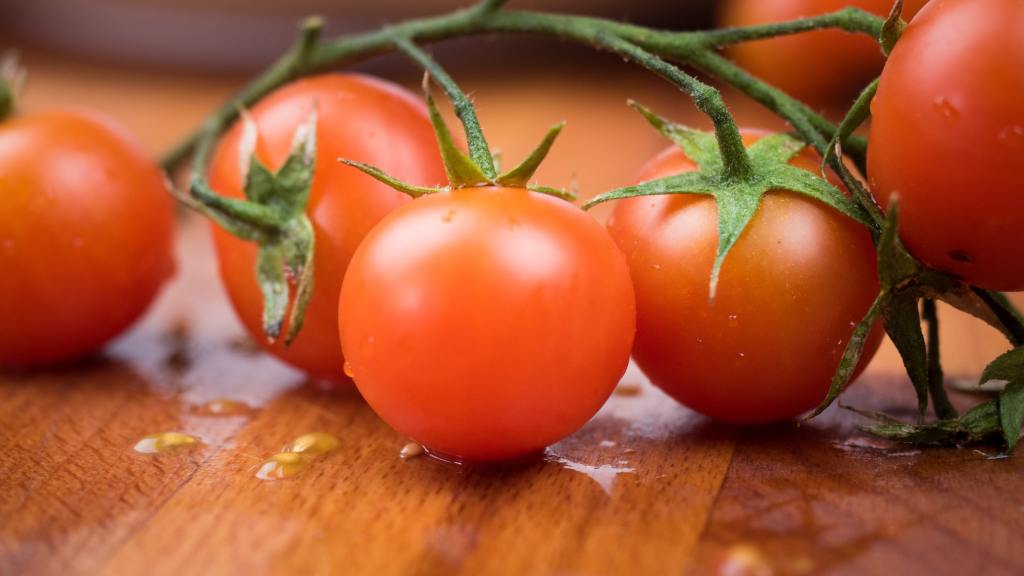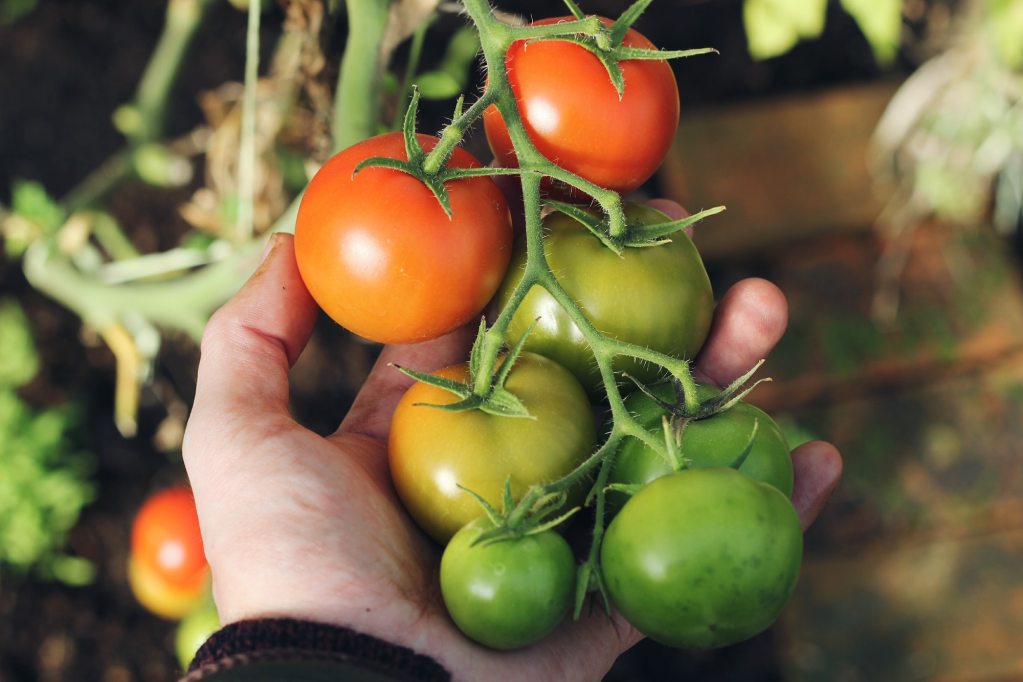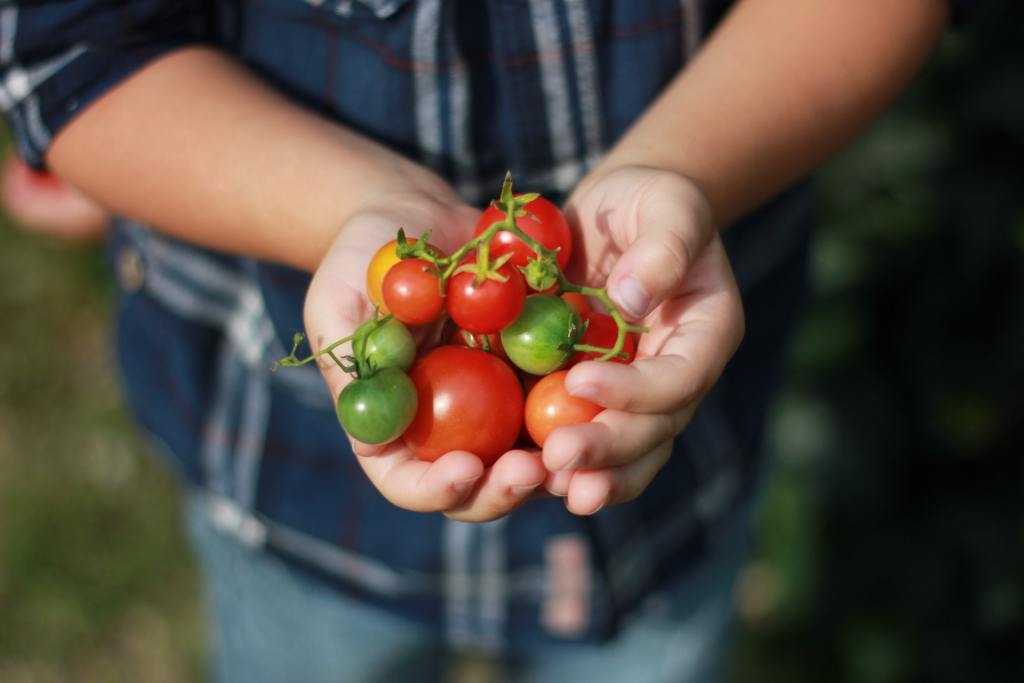As the growing season comes to an end, you may still experience the urge to grow juicy tomatoes in your garden. Growing tomatoes in the fall isn’t a mere pipe dream—you can definitely plant tomatoes indoors come autumn when it gets too cold outside. While keeping your plants healthy may be a challenge initially, it’s not an impossible endeavor. Ahead, we go through how to grow tomatoes indoors, breaking down all the tips and tricks you need up your sleeve when it comes to getting a successful harvest.

How to pick tomatoes to grow indoors
When you’re picking out tomatoes to grow indoors, it’s best to go with smaller varieties. You’ll come across two different types of tomatoes: determinate (bush) and indeterminate (vine). Indeterminate tomatoes will more likely produce fruit throughout the season, but they may require more support and surface area. If you’re keen on finding a plant that’s more space efficient, a determinate one may be the way to grow. Indeterminate varieties include Tommy Toe, Red Robin, and Tiny Tim, among others. Determinate ones include Washington Cherry, Cherries Jubilee, and Gold Nugget.
How to start tomatoes indoors
Getting seedlings or more mature plants will be the easiest route for growing tomatoes, but these may not always be readily available as seeds, especially outside of the growing season. While grabbing seeds from a garden center will be easiest, you can even take some from tomatoes you might already have lying around the house!
Starting seeds is relatively straightforward. You can soak your seeds for a day to help better their chances of germinating, but this step isn’t always necessary. While biodegradable seed-starting pots can be helpful, you can also situate your seeds inside containers you have at home and cover them with coco coir or some other sterile seed-starting mix. (Remember to poke in some holes for drainage!) As long as you give your seeds bright light in addition to warmth and moist soil, they should germinate in five to ten days.
When your seedlings are three to four inches tall, it’s time to transplant them into a planter, preferably one that’s clay for water absorption and at least 12 inches deep for roots to grow. When potting your tomato plant, use a well-draining potting mix—garden soil will be too heavy for a container-bound plant.

How to care for tomatoes indoors
- Watering and feeding: Whenever you water your tomatoes, make sure you water your soil all the way through. You’ll know that it’s time to water when the top inch of the soil feels dry to the touch. Since tomatoes are heavy feeders, mix an organic slow-release fertilizer into the potting mix.
- Lighting: Tomato plants need at least eight hours of bright light a day. If your home doesn’t get that much light, supplement natural lighting with grow lights. With artificial lighting, situate your lamps no more than a handful of inches above your tomato plants. If you keep your lights too high, your plant may become leggy as it tries to stretch towards the light source. Side note: While you might not be able to get as much light inside, the advantage to growing tomatoes indoors during the autumn is that it’s warmer inside—tomatoes need temperatures of at least 65 degrees to flourish.
- Supporting: Even indoors, tomato plants, especially the vining variety, may need extra support as they grow, or else they might flop over. Install a small trellis, stake, or cage to keep your plant upright.
- Pollinating: One of the biggest challenges when tending tomatoes indoors is that you don’t have pollinators or wind to help distribute the pollen so fruit can grow. However, you can definitely work your way around this hurdle. One way is to use a fan to create a soft breeze. You can also gently shake your tomato stems to help distribute the pollen. And last but not least, you can use a cotton swab to spread the pollen around.

How to know when it’s time to harvest your indoor tomatoes
Tomatoes develop fruit sometime between 60 and 80 days after you first start them. Ideally, tomatoes should be picked when they’re still slightly greenish. Even after you pluck them, tomatoes will continue to ripen off the vine and turn redder in color. The advantage is that if you pick them before they’re completely ripe, you won’t risk as much bruising. After harvesting tomatoes from an indeterminate variety, you can continue to care for your plant so that it keeps producing fruit.
While the thought of growing tomatoes indoors may seem like a daunting endeavor, it’s actually a feasible undertaking. By tending after tomatoes inside, you can keep a close eye on their growth and protect them from the elements come cold, wintry weather. After two to three months of hard work, you’ll be able to reap the literal fruits of your labor!
Editors' Recommendations
- Beyond basil and cilantro, add these unique plants to your indoor herb garden
- Here’s how often you should be fertilizing your indoor plants
- Wondering how to water succulents? Here are the best succulent watering tips
- Use these tips to start a successful indoor vegetable garden this winter
- Add style to your space with these trendy alocasia indoor plants



